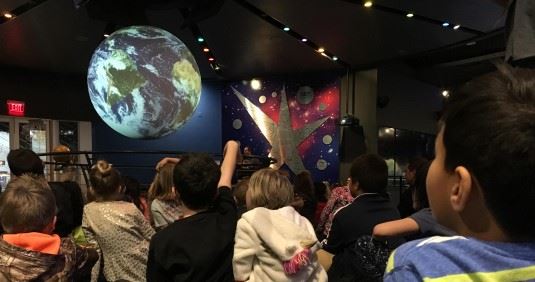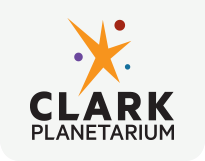Education
Science on a Sphere

Science on a Sphere (SOS) is a display system that uses computers and projectors to display images and other data onto a large sphere, similar to a giant animated globe. Educational themes are adapted to Utah science and SEEd grade level standards. Shows and themes are available by request to any group and can be customized to the group’s level. For school groups, the recommended science and SEEd grade levels are included for easy reference:
|
Show Title |
Recommended Grade Range |
Description |
Educator Guides |
|---|---|---|---|
|
Sun, Earth, and Moon |
4th, 6th |
Students investigate the similarities and differences between the Earth and the celestial bodies that affect it most – the Sun and Moon. Students will learn the patterns of the Sun, Earth, Moon system, including rotations and orbits that produce the day/night cycle, moon phases, and the movement of the stars across the sky. (Download educator guide here.) |
|
|
Solar System |
6th |
Students explore the realms of our Solar System using 3D spherical projections of the Sun, planets, major moons, dwarf planets and even asteroids. Animated projections include high-resolution models solar flares, planetary surfaces, and newly-released imagery from current NASA missions. |
|
|
Weather and Climate Patterns |
5th, 6th |
Weather is the day to day state of the atmosphere, and climate is the average weather over a long time for a specific area. Students can explore either topic, including ways in which weather and climate are studied and their impacts on life and the environment. |
|
|
Earth Systems and Processes |
5th, 7th |
Earth’s surface has undergone and continues to experience changes that affect its land, water, and air. Students will explore geological features that arise from the dynamic movement of land masses and how interactions with major systems affect Earth’s land and water. |
|
|
Technology of Space Exploration |
|
Our understanding of the Solar System is the result of decades of exploration by explorers, most of whom have been robotic. Many of these missions are still making new discoveries, while others are currently speeding towards their destinations or preparing to be launched. Students will explore a variety of these spacecraft, the technologies they use to explore the planets, and what we hope to discover.
|
|
|
Moon to Mars |
Covers current space exploration topics |
Humanity is once again preparing to return to the Moon – this time to stay, and from there to reach Mars. Students will learn about the challenges of living and exploring in deep space, as well as sustainable, reusable technologies that support exploration. |
|


